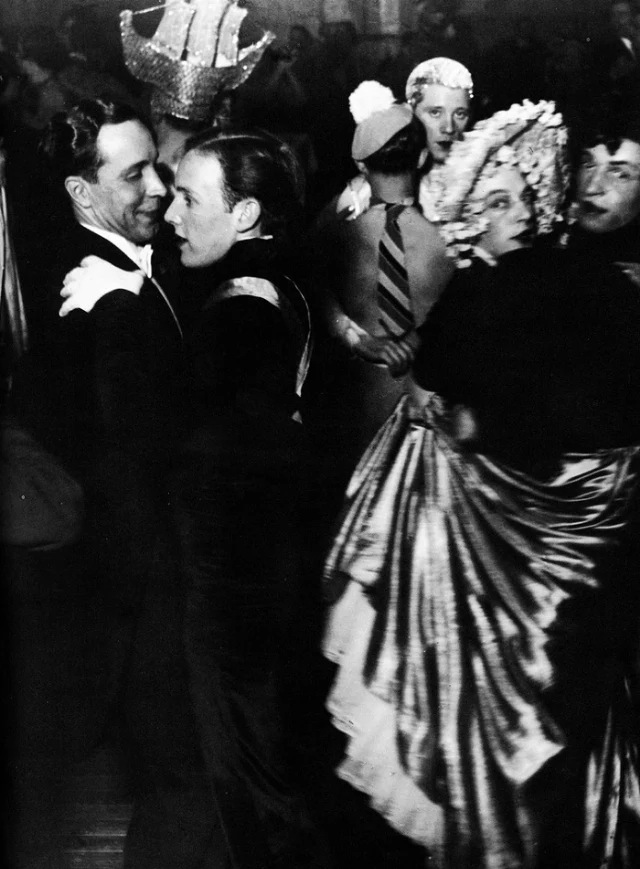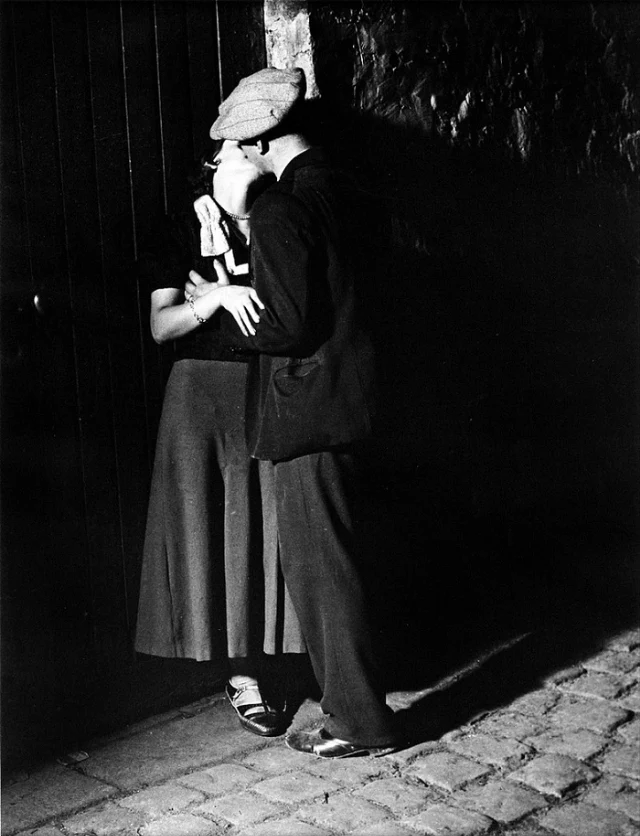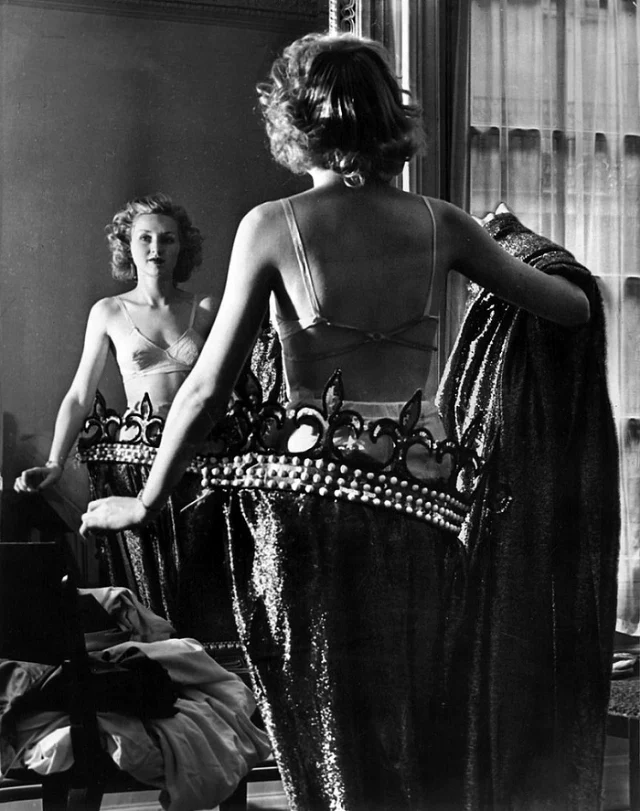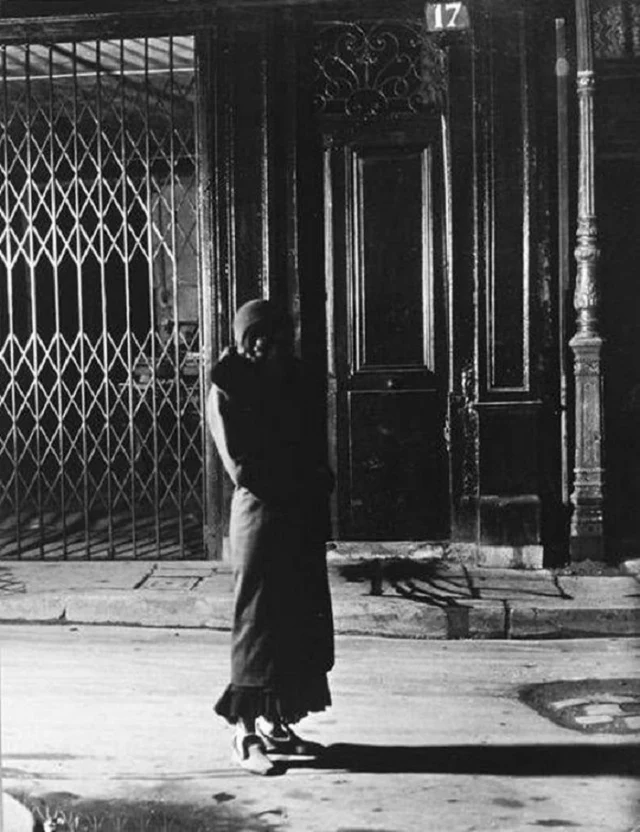Roaming Paris streets by night in the early 1930s, Brassaï created arresting images of the city’s dramatic nocturnal landscape. The back alleys, metro stations, and bistros he photographed are at turns hauntingly empty or peopled by prostitutes, laborers, thugs, and lovers. This collection of 30 black and white photographs is a stunning portrait of nighttime in the City of Light, as captured by its most articulate observer.
When 25-year-old Gyula Halász arrived in Paris from his native Hungary in 1924 he’d been trained as an artist and soon found his way into the circles frequented by Picasso, Miró, Dalí and Henry Miller. Continuing his work as a sculptor and painter, he supported himself by working as a journalist, adopting the pseudonym of Brassaï, derived from the name of his native city, Brassó. Obliged to use photography for his assignments, he initially disliked the medium, but eventually started to appreciate its aesthetic capabilities. Roaming the city at night, he brought his camera along and began to capture the unique flora and fauna of nighttime Paris.
While his images reflect the glitter and gaiety the city was famous for—the brilliantly lit grand staircase of the Opéra on a gala night, the Eiffel Tower blazing with lights in the shape of shooting stars, cancan girls doing high kicks at the Bal Tabarin, Brassaï also included the grittier side of Paris by night: a row of clochards sleeping under the colonnade of the Bourse de Commerce; an elderly homeless woman dressed in the tattered remnants of her former finery; a ragpicker crouched on the cobblestones, digging through a trashcan.
He also chronicled the city’s nocturnal workers: night-beat policemen, their capes billowing over their bicycles; workers at Les Halles unloading the vegetables brought into the city on farm carts or special little produce trains; workmen polishing tram tracks; a milkman loading milk cans onto his horse-drawn cart.
Shooting at night was a technical challenge, and the photographs display an intriguing variety of light sources—gas lamps and their reflections in the Seine, a glowing brazier, the sparks of a workman’s grinding tool, a burning building with silhouetted firefighters, a checkerboard of lighted and dark windows on a facade.
The black and white photographs have a misty, dreamlike, almost magical look. Brassaï himself described it best: “The surreal effect of my pictures was nothing more than reality made fantastic through a particular vision. All I wanted to express was reality, for nothing is more surreal.”






























